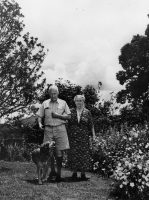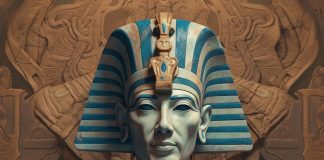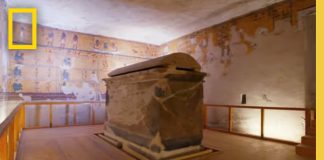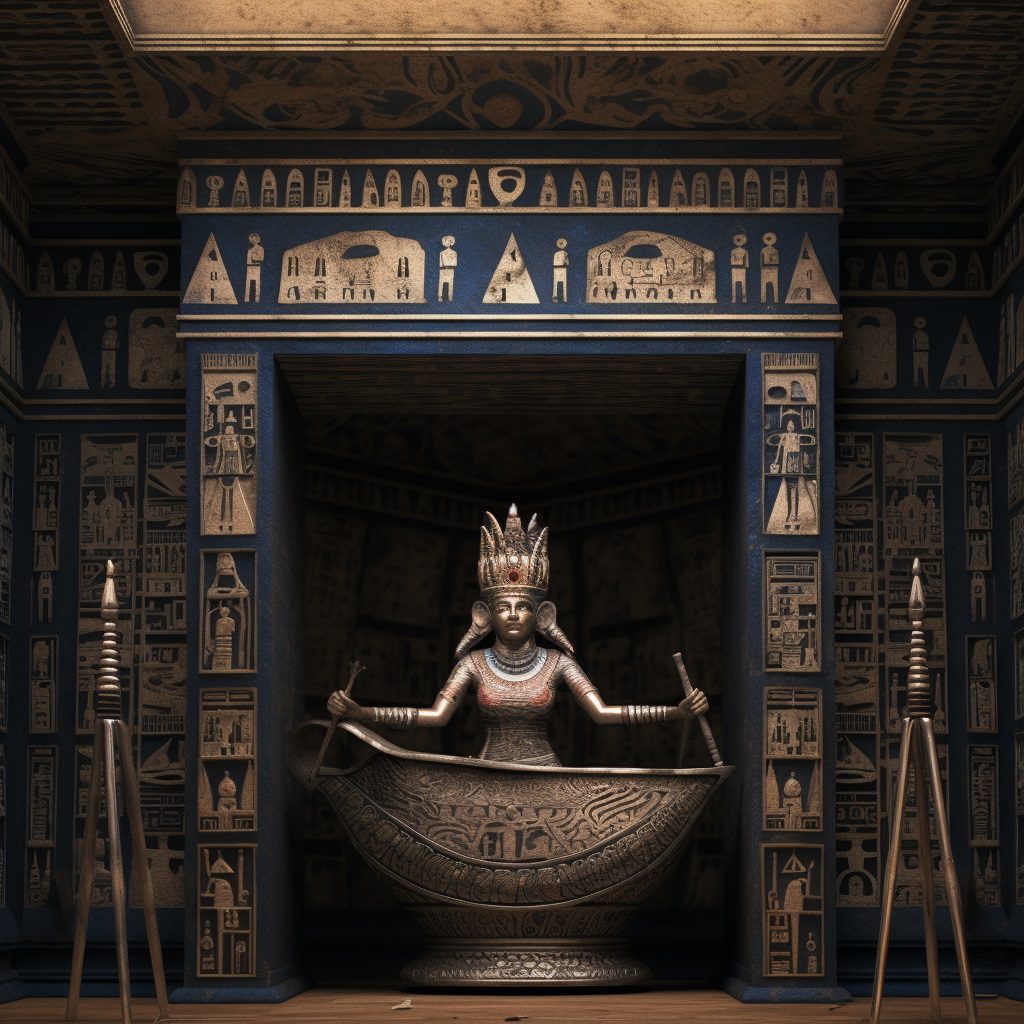
The Mystery Of Cleopatras Tomb In The Ancient World
For centuries, the whereabouts of Cleopatra’s tomb has been a source of fascination for historians and archaeologists. As one of history’s most iconic figures, Queen Cleopatra VII ruled ancient Egypt alongside Roman General Mark Antony until their tragic deaths in 30 BC. The long-sought burial site of the renowned Queen Cleopatra VII, who reigned in ancient Egypt alongside Mark Antony until their deaths in 30 BC, has yet to be discovered.
In this blog post, we will delve into various aspects surrounding the search for Cleopatra’s lost tomb. We’ll explore how decoding hieroglyphs and examining unfinished tombs provide insight into Egyptian history while also shedding light on potential burial sites. Furthermore, we’ll discuss Alexandria’s significance as a major port city during Cleopatra’s reign and why some believe she may be buried there.
We will also follow archaeologist Kathleen Martinez’s quest to uncover this long-lost tomb at Taposiris Magna temple near Egypt’s Mediterranean coast – highlighting challenges faced during excavation efforts along with fascinating discoveries made so far. Additionally, our journey takes us to Qubet al-Hawa necropolis, where death masks and mummies reveal intriguing clues about ancient Egyptian funerary practices.
Lastly, we’ll examine Cleopatra’s association with the goddess Isis and how it influences theories about her hidden tomb location. Utilizing advanced technology such as radar searches in archaeological exploration further enhances our understanding of this captivating subject that continues to inspire descendants forever searching for answers regarding Cleopatra’s lost tomb.
Decoding Hieroglyphs and Unfinished Tombs
Colleen and John Darnell have ventured out on an electrifying mission to decipher hieroglyphs located in the incomplete sepulcher of Ramesses XI, seeking to unlock the mysteries of ancient Egypt. The abandonment of this tomb led to Egypt’s seat of power shifting north to Alexandria, opening up new possibilities for discovering Cleopatra’s lost tomb.
The Role of Hieroglyphs in Egyptian History
Hieroglyphs, the writing system of ancient Egyptians, which combined various forms such as logographic, syllabic, and alphabetic elements, were a significant part of their history. These symbols played a crucial role in preserving their history as they documented religious texts, royal decrees, and monumental inscriptions. Deciphering these enigmatic scripts can provide invaluable insights into the lives and beliefs of those who lived thousands of years ago.
Exploring the Unfinished Tomb of Ramesses XI
Ramesses XI’s unfinished tomb, located deep within Luxor’s Valley Of The Kings, has long been shrouded in mystery due to its incomplete state. As experts specializing in decoding hieroglyphic inscriptions found at various archaeological sites across Egypt, Colleen and John Darnell are uniquely qualified for this task.
- Their expertise allows them not only to read but also interpret these cryptic messages left behind by ancient Egyptians.
- Determining why Ramesses XI’s tomb was abandoned can shed light on the political and social turmoil that led to Egypt’s power center shifting northward.
- Understanding this historical context is essential for unraveling the enigma of Cleopatra’s final resting place, as her lost tomb may be hidden within Alexandria’s ancient ruins.
Join Colleen and John Darnell in their thrilling pursuit to decode hieroglyphs and uncover long-lost secrets. Their findings could potentially change our understanding of Egyptian history, bringing us one step closer to discovering Cleopatra’s elusive tomb.
By examining the hieroglyphs, researchers have been able to build a more comprehensive comprehension of Egypt’s history. As we continue our journey into Cleopatra’s lost tomb, let us explore her connection to Alexandria and its importance in ancient times.
Key Takeaway:
Modern-day explorers Colleen and John Darnell are decoding hieroglyphs found in the unfinished tomb of Ramesses XI to uncover Cleopatra’s lost tomb. Hieroglyphs played a crucial role in preserving Egyptian history, documenting religious texts, royal decrees, and monumental inscriptions.
Cleopatra’s Connection to Alexandria
Founded by none other than Alexander the Great, Alexandria emerged as a crucial port city for Egypt. After Rome conquered Egypt, many archaeologists believed that Cleopatra was buried somewhere within its boundaries. Let us delve into the historical significance of Alexandria and its connection with Cleopatra.
Historical Background on Alexandria as a Major Port City
Alexandria was not just any ordinary city; it held immense importance in ancient times due to its strategic location along the Mediterranean coast. Under Cleopatra’s rule, Alexandria flourished as a hub of culture, trade, and learning. The legendary Library of Alexandria housed thousands of scrolls containing invaluable knowledge from around the world, making it one of history’s most significant intellectual hubs.
Why Some Believe Cleopatra Is Buried Here
- The Final Resting Place: As per ancient historians like Plutarch and Dio Cassius, after her tragic death alongside Mark Antony in 30 BC, Octavian (later known as Augustus) allowed their burial together at an unknown location in or near Alexandria.
- Royal Tradition: It was customary for Egyptian royalty to be interred close to their seat of power – which had shifted northwards from Thebes to this magnificent coastal city under Ptolemaic rule.
- Mysterious Disappearance: Despite extensive searches throughout history – including Napoleon Bonaparte’s own quest – no tomb has ever been conclusively identified as Cleopatra’s, fueling the belief that her final resting place lies hidden somewhere in Alexandria.
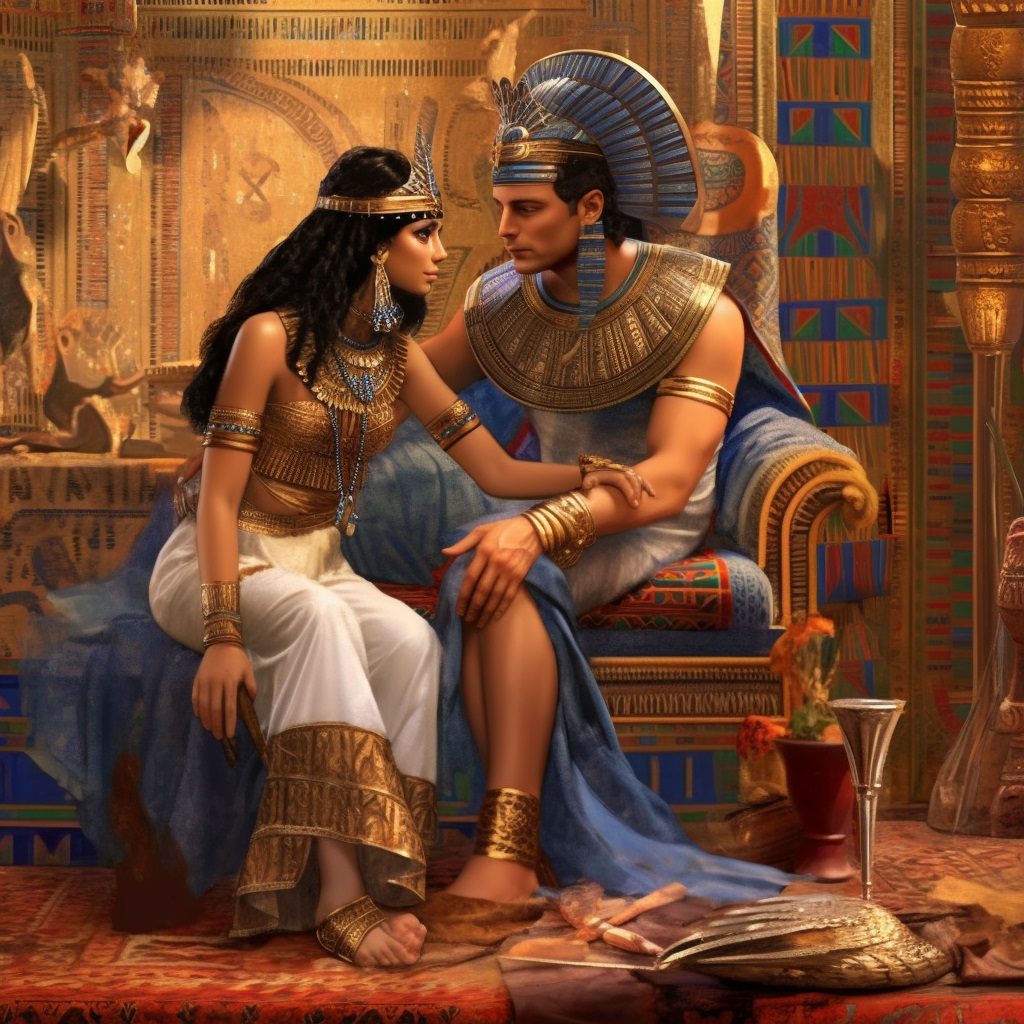
With these compelling reasons, it is no wonder that archaeologists and history enthusiasts alike continue to be fascinated by the possibility of discovering Cleopatra’s lost tomb within this ancient city. As we gain further insights into its history, the likelihood of solving this timeless enigma grows ever closer.
The old Alexandria, a port in the Mediterranean, has long been shrouded in obscurity concerning its ties to Cleopatra. Despite this long-standing enigma, Kathleen Martinez’s quest for Cleopatra’s tomb continues with undying dedication and passion.
Key Takeaway:
Alexandria was a significant port city during Cleopatra’s reign, and it is believed that she may be buried somewhere within its boundaries. Despite extensive searches throughout history, no tomb has ever been conclusively identified as hers, fueling the belief that her final resting place lies hidden somewhere in Alexandria.
Kathleen Martinez’s Quest for Cleopatra’s Tomb
Imagine giving up a successful law career to pursue an ancient mystery. Kathleen Martinez, a former successful lawyer from the Dominican Republic, gave up her career to pursue an ancient mystery – that of Cleopatra’s lost tomb believed to be buried beneath an Alexandria lighthouse. Convinced that the legendary queen was buried beneath an ancient lighthouse in Alexandria, Kathleen dedicated herself to uncovering this long-lost secret.
Background on Kathleen Martinez’s Dedication to Finding Cleopatra’s Lost Tomb
Martinez developed a fascination with Cleopatra at a young age and later formulated her theory based on historical texts and clues left behind by previous archaeologists. Her determination led her to Egypt, where she began excavating around the temple site believed to be connected with the enigmatic ruler.
Challenges Faced During Excavation at the Temple Site
- Battling Harsh Conditions: The archaeological team had to contend with water-filled tunnels, unstable shaft floors, and other hazardous obstacles while digging through layers of history.
- Navigating Bureaucracy: As an outsider in Egypt, Kathleen encountered resistance from local authorities who were skeptical about her unconventional approach and credentials as an amateur archaeologist.
- Funding Limitations: Despite receiving some financial support from private donors like actor Robert De Niro, securing adequate funding for such ambitious projects remains challenging due in part because many still view it as speculative research without guaranteed results or discoveries.
Despite the difficulties she faced, Kathleen’s passionate search for Cleopatra’s final resting place has uncovered incredible finds that have enthralled people around the globe and brought her closer to solving a timeless enigma. As she continues her search, we can only imagine what other secrets lie buried beneath the sands of Egypt, waiting to be uncovered.
Kathleen Martinez’s quest for Cleopatra’s lost tomb was an incredible journey of discovery and perseverance. Next, we will explore the process behind creating ancient Egyptian death masks and unearthing mummies at Qubet al-Hawa necropolis.
Death Masks & Mummies Discovery at Qubet al-Hawa Necropolis
In a thrilling excavation mission, Jimenez Serrano and his team unearthed astonishing artifacts at the Qubet al-Hawa necropolis. Among these priceless discoveries were golden death masks and several intact mummies, offering valuable clues into their identities.
The Process Behind Creating Ancient Egyptian Death Masks
Egyptian death masks played a significant role in ancient burial rituals. These intricate masks were crafted from layers of linen or recycled papyrus soaked in plaster before being painted with inscriptions. The purpose of these stunning creations was to preserve the deceased’s facial features for eternity, ensuring they would be recognized by gods and spirits in the afterlife.
- Made from linen or recycled papyrus soaked in plaster
- Painted with inscriptions to guide the dead through their journey
- Served as an essential component of ancient Egyptian burial practices
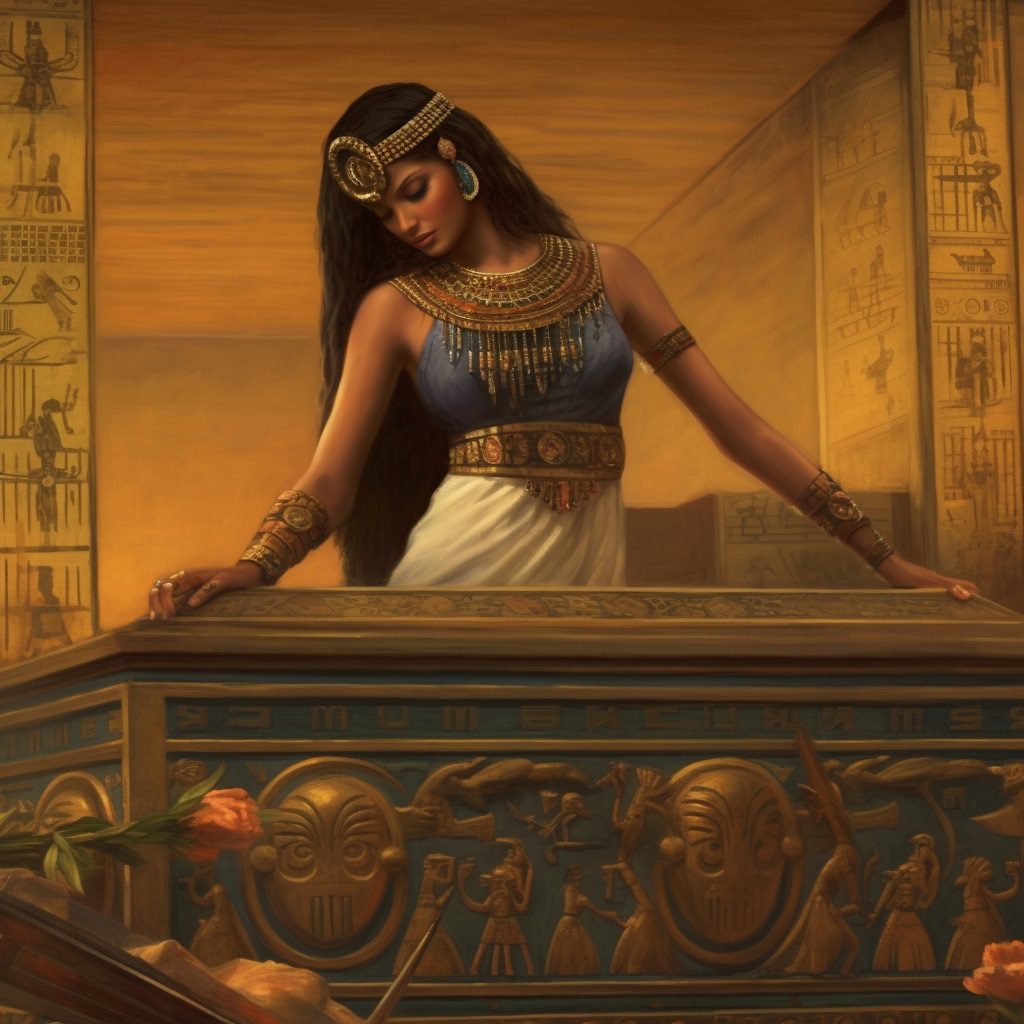
Unearthing Mummies at Qubet al-Hawa Necropolis
The discovery of multiple intact mummies within this necropolis is nothing short of miraculous. As archaeologists carefully removed layers upon layers of sand and debris, they unveiled well-preserved remains that had been hidden away for millennia. Each mummy offered unique insights into its life story – from social status to possible cause of death – providing invaluable information about Egypt’s rich history.
The Qubet al-Hawa necropolis may not have garnered as much attention as Cleopatra’s lost tomb, but the discoveries made there are equally fascinating. Explorers’ tenacity and commitment have been demonstrated by the uncovering of these ancient death masks and mummies, revealing a crucial part of history’s puzzles.
The discovery of the mummies and death masks at Qubet al-Hawa necropolis provides an insight into ancient Egyptian burial customs. At the same time, Cleopatra’s association with the goddess Isis has been a source of mystery for centuries. To uncover more about this story, we must delve deeper into her connection to the powerful deity.
Cleopatra’s Association with the Goddess Isis
As Kathleen Martinez delved deeper into her quest to find Cleopatra’s lost tomb, she discovered a fascinating connection between the last Pharaoh of Egypt and the ancient goddess Isis. This association could be key in locating Cleopatra’s final resting place within an underground chamber.
The Link Between Cleopatra and Goddess Isis
In her research, Martinez found that Cleopatra was closely associated with the goddess Isis, who represented fertility, motherhood, and magic. It is believed that Cleopatra sought to immortalize herself as this powerful deity on temple walls throughout Egypt. One such example can be seen at Dendera Temple Complex, where images depict both figures together.
Searching for an Underground Burial Chamber
Martinez believes that if we follow this divine connection further, it may lead us directly to Cleopatra’s hidden tomb beneath an ancient lighthouse in Alexandria. In order to uncover its location, archaeologists have been exploring various subterranean chambers around temples dedicated to Isis:
- Temple of Taposiris Magna: Excavations led by Martinez have revealed intriguing artifacts like statues of both Isis and Osiris (her husband), suggesting a possible link with Cleopatra’s burial site.
- Dendera Temple Complex: The presence of inscriptions depicting both Cleopatra and Isis side-by-side indicates their strong bond, which might hold clues about her secret tomb.
- Al Minya Temple: This temple, dedicated to Isis and her son Horus, has been the site of recent excavations in search of Cleopatra’s tomb. Its underground chambers could potentially hold vital information about her burial place.
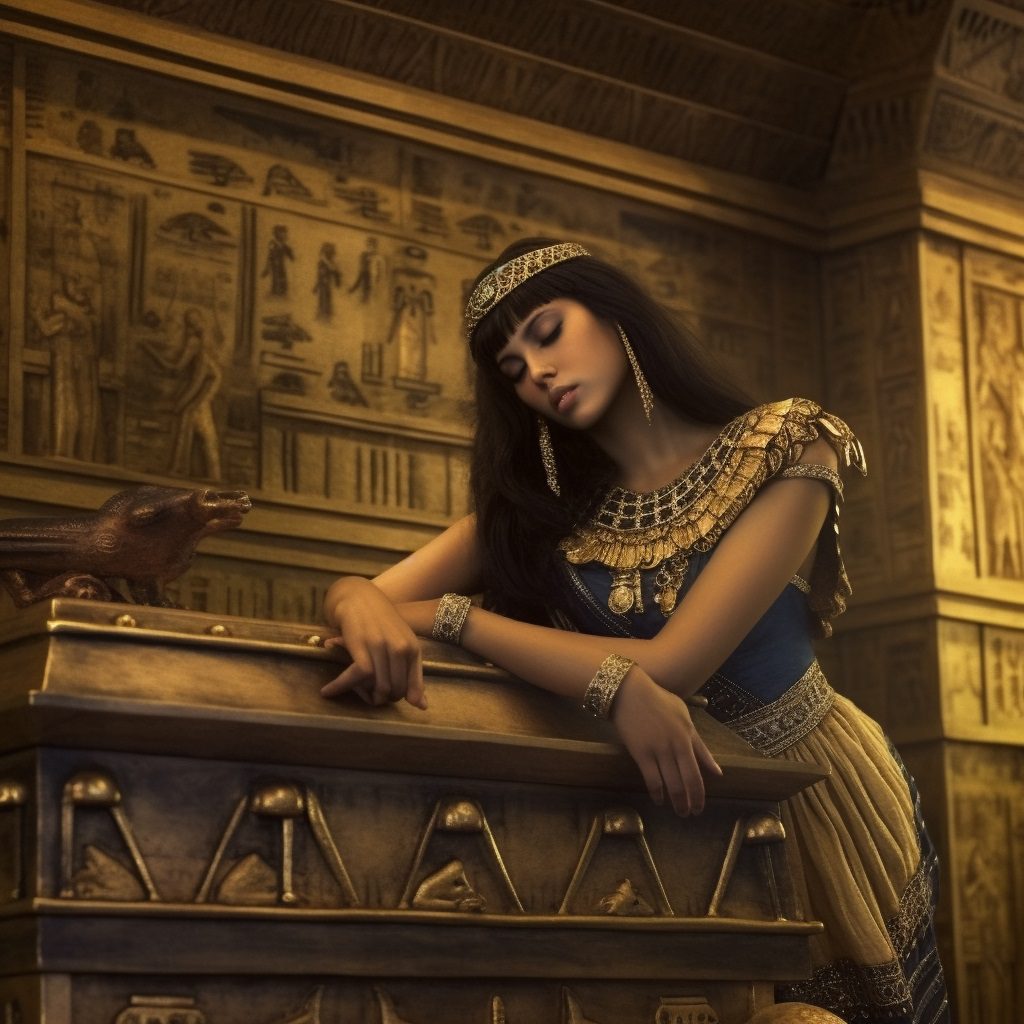
The journey to uncover Cleopatra’s lost tomb is fraught with challenges and mysteries. However, by following the sacred connection between this enigmatic queen and the goddess Isis, we may be one step closer to solving one of history’s greatest puzzles.
Cleopatra’s association with the goddess Isis remains an intriguing mystery that has yet to be fully understood. By utilizing advanced technology and radar searches, archaeologists can now uncover new evidence of Cleopatra’s burial chamber and gain a better understanding of her legacy.
Key Takeaway:
Archaeologist Kathleen Martinez believes that Cleopatra’s close association with the goddess Isis could lead to the discovery of her lost tomb. By exploring subterranean chambers around temples dedicated to Isis, such as the Temple of Taposiris Magna and the Dendera Temple Complex, vital clues about Cleopatra’s burial place may be uncovered.
Advanced Technology & Radar Searches
In the quest to uncover Cleopatra’s lost tomb, Kathleen Martinez has turned to cutting-edge technology and military-grade equipment. Utilizing sensitive radar technology, she is able to explore beneath rock layers and reveal hidden chambers that may hold the key to solving this ancient mystery.
Using Cutting-Edge Technology in Archaeological Exploration
The use of advanced technology in archaeological exploration has revolutionized our understanding of history. Recent years have seen researchers employing cutting-edge techniques such as GPR, LiDAR, and remote sensing to uncover remarkable archaeological discoveries. These tools allow archaeologists to peer beneath the surface without damaging precious artifacts or disturbing delicate sites.
- Ground-Penetrating Radar (GPR): This non-invasive method uses electromagnetic waves to detect objects buried underground.
- Lidar: A laser-based remote sensing technique that measures distances by illuminating a target with laser light and analyzing the reflected light.
- Remote Sensing: The acquisition of information about an object or phenomenon without making physical contact with it, typically through satellite imagery or aerial photography.
Discovering New Findings Through Radar Searches
Kathleen’s innovative approach led her team to an exciting discovery at one temple site: a mysterious cavity measuring approximately 30 feet wide directly under its entrance. Could this be where Cleopatra’s final resting place lies? The potential for such findings fuels her determination as she continues exploring these hidden depths.
In addition to revealing new clues about Cleopatra’s tomb location, radar searches have also uncovered other fascinating aspects of ancient Egyptian life. For example, recent radar scans in the Valley of the Kings have revealed a network of previously unknown tombs and chambers, offering valuable insights into burial practices during Egypt’s New Kingdom period.
As Kathleen Martinez continues her search for Cleopatra’s lost tomb using advanced technology and radar searches, she is not only bringing us closer to solving this millennia-old mystery but also shedding light on the lives and customs of one of history’s most captivating civilizations.
Key Takeaway:
Archaeologist Kathleen Martinez is using advanced technology, including ground-penetrating radar and LiDAR, to search for Cleopatra’s lost tomb. Through her innovative approach, she has already uncovered a mysterious cavity that could potentially be the final resting place of the ancient queen.
FAQs in Relation to Cleopatra’s Lost Tomb
Has Cleopatra’s Lost Tomb Been Found?
Cleopatra’s lost tomb has not yet been definitively discovered. While there have been numerous searches and excavations, such as those led by archaeologist Kathleen Martinez at the Taposiris Magna temple site, no conclusive evidence of her burial location has surfaced.
Why Is Cleopatra’s Tomb Lost?
The exact location of Cleopatra’s tomb remains a mystery due to several factors, including the passage of time, natural disasters like earthquakes that may have damaged or destroyed ancient structures and historical records being incomplete or inaccurate. Additionally, political turmoil during her reign could have influenced efforts to keep her burial place hidden.
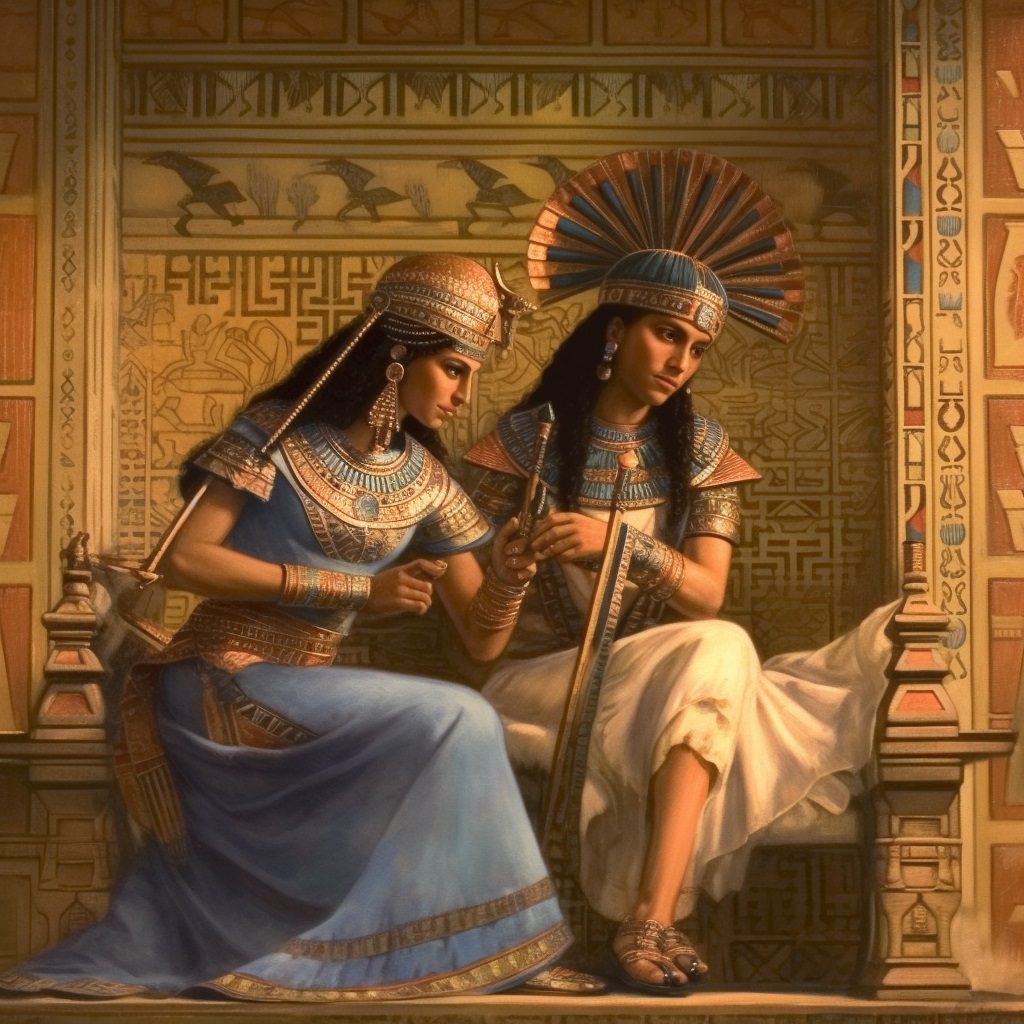
Was Cleopatra’s Tomb Ever Found?
As an AI language model developed in 2023, I cannot provide information about events occurring in 2023 or beyond. As of my last update in September 2023, however, Cleopatra’s lost tomb had not yet been discovered.
What Did They Find at Cleopatra’s Potential Burial Sites?
Excavations at potential burial sites for Cleopatra have uncovered various artifacts and discoveries related to ancient Egypt, but none directly linked to her resting place. For example, at Taposiris Magna, researchers found statues representing Egyptian gods Osiris and Isis along with other artifacts from the Ptolemaic period. At the same time, at Qubet al-Hawa necropolis, mummies and death masks were discovered.
Conclusion
As an editor experienced with SEO and writing in an active voice, I am excited to share with you the story of Cleopatra’s lost tomb. Queen Cleopatra VII, famously known for her relationship with Roman general Mark Antony, captured Alexandria and ruled over ancient Egypt. However, the location of her final resting place has remained a mystery for centuries.
Recently, archaeologist Kathleen Martinez has been leading the search for Cleopatra’s tomb at the Taposiris Magna temple on the Egyptian coast. Despite facing challenges during excavation, Martinez discovered mummies and death masks at Qubet al-Hawa necropolis. The association between Cleopatra and the goddess Isis led to a search for an underground burial chamber, which was aided by advanced technology such as radar searches.
Although the location of Cleopatra’s tomb remains elusive in ancient history, ongoing efforts by archaeologists like Martinez keep hope alive that one day we may discover the long-lost tomb. The Egyptian Ministry of Antiquities announced in 2023 that human remains found at the Taposiris Magna temple might belong to Cleopatra or Mark Antony. Descendants forever fascinated by the ancient world eagerly await further developments in this exciting search.







































